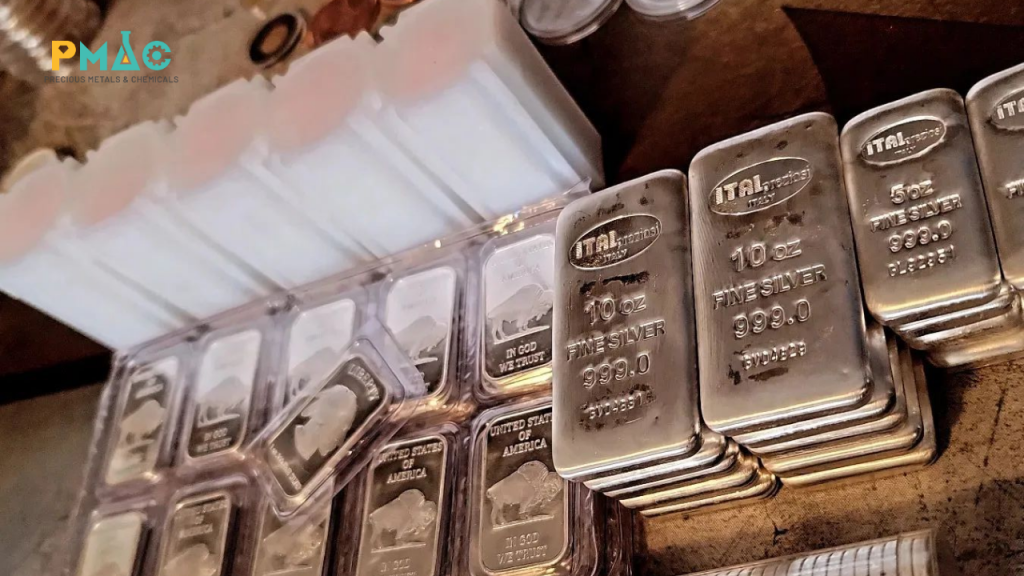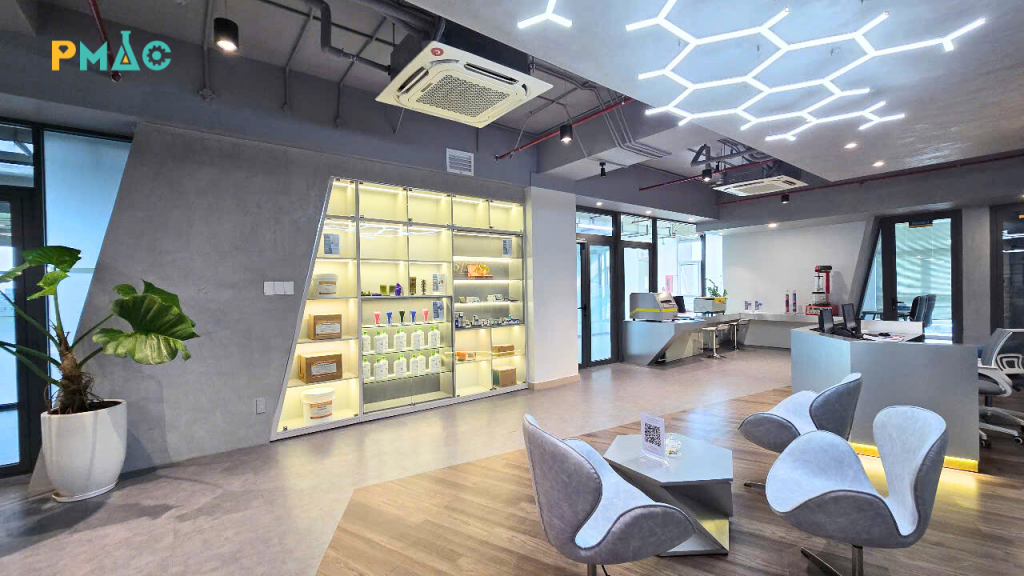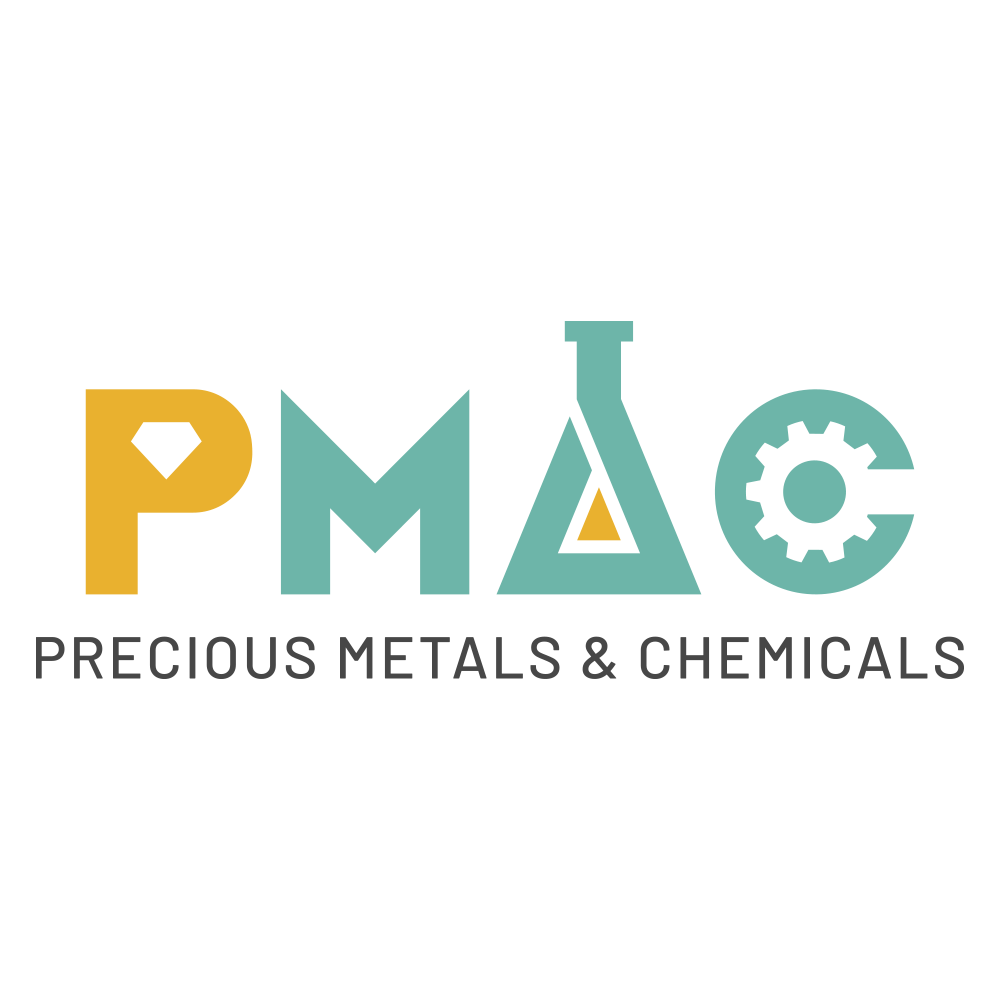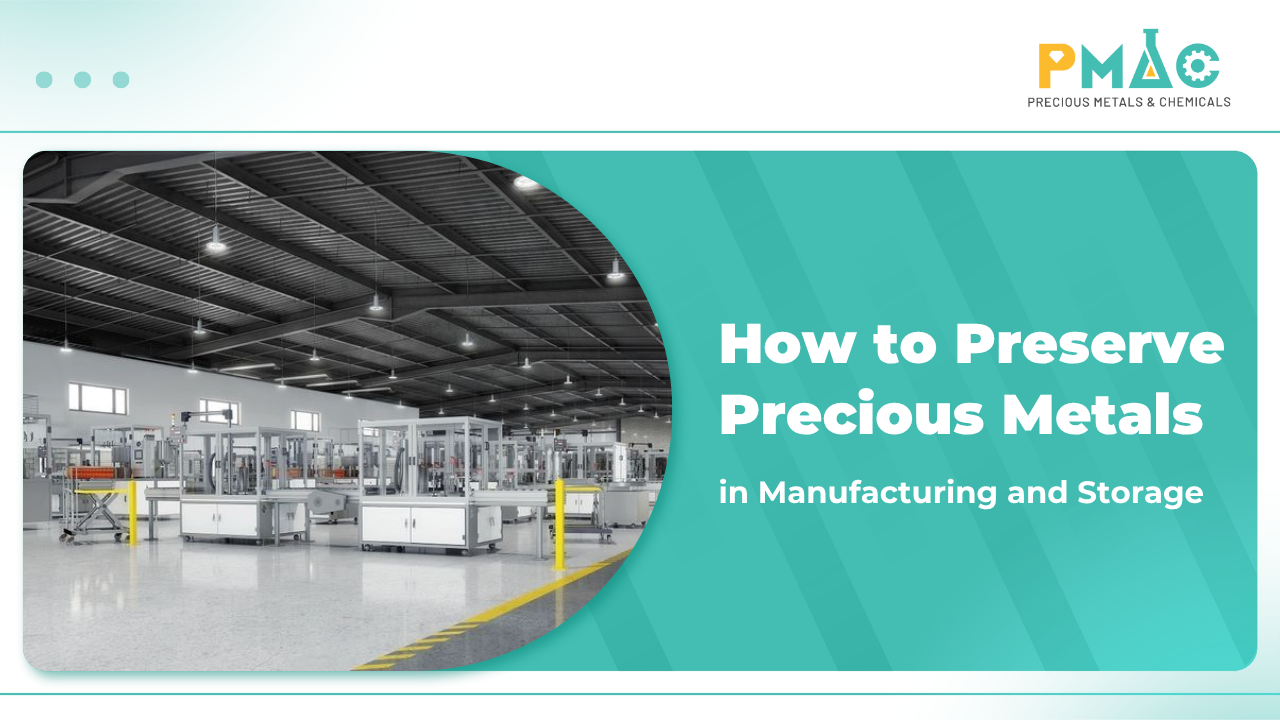Precious metals not only possess high economic value but also play a critical role in various modern manufacturing sectors such as electronics, automotive, healthcare, and jewelry. Therefore, proper preservation in both production and storage environments is essential to maintain material quality, minimize losses, and optimize operational costs.
I. Introduction to Precious Metals
1. What Are Precious Metals?
Precious metals are a group of metals characterized by high economic value, stable physical and chemical properties, and diverse applications across industry, jewelry, and finance. These metals are typically rare in nature, highly resistant to corrosion, and exhibit exceptional electrical and thermal conductivity.
The prices of precious metals are generally high and they are often used for specialized purposes—such as currency, investment assets, jewelry, and artistic objects. Depending on the specific metal and its applications, societies may place different levels of value and significance on each one.

Silver bullion
II. Top Functional Applications of Precious Metals
- Gold
Gold salts are chemical compounds containing gold, typically found in liquid form. They are widely used in precision electroplating processes to create thin, uniform, and long-lasting gold coatings on electronic components and other parts.
In addition to electroplating, gold salts are also utilized in semiconductor manufacturing and in certain specialized medical applications. In the field of recycling, gold salts play a critical role in the recovery of gold from scrap materials and industrial waste.
Learn more: https://web.pmac.asia/en_US/shop/category/gold-plating-225
- Silver
Silver is the most electrically and thermally conductive metal among all precious metals. Thanks to these properties, it is widely used in the manufacturing of electronic components, printed circuit boards (PCBs), and various conductive devices.
In addition to its industrial uses, silver is also valued in jewelry, high-end household products, and medical applications due to its natural antibacterial properties.
- Rhodium
Rhodium is one of the rarest and most valuable precious metals in the world, known for its exceptional reflectivity and outstanding resistance to corrosion. It is commonly used for plating high-end jewelry, enhancing surface brilliance and providing protection against scratches and wear.
In addition to its decorative use, rhodium plays a critical role in the automotive industry, particularly in catalytic converters, where it helps reduce harmful emissions by facilitating the breakdown of toxic exhaust gases.
- Palladium
Palladium is a soft, malleable metal with excellent resistance to oxidation. It is widely used in the electronics industry, particularly in the manufacturing of components and printed circuit boards.
Palladium is also a key element in white gold alloys and dental materials. Additionally, it serves as an effective catalyst in various industrial processes, including hydrogenation and automotive emission control.
- Platinum
Platinum is a highly durable precious metal known for its exceptional heat resistance and corrosion resistance. These properties make it ideal for use in high-end jewelry, medical equipment, and as a catalyst in industrial and chemical processes.
Platinum is also highly valued in applications that require long-term material stability and resilience, making it a preferred choice in demanding technological and environmental conditions.
- Iridium
One of the rarest and most durable metals today, distinguished by its exceptional heat resistance and superior corrosion resistance. Iridium is used in devices operating in high-temperature environments, as well as in the electronics, medical, and aerospace industries, and in the production of electrodes for batteries and specialized electronic equipment.

Applications of Precious Metals
II. How to Preserve Precious Metals in Manufacturing and Storage Environments
1. Environmental Control
Precious metals, despite their high stability, can still be affected by environmental conditions if not stored properly. To ensure the quality and value of the metal, storage areas must be kept dry, well-ventilated, free of dust, and free from corrosive chemicals.
Temperature and humidity should be maintained at stable levels, avoiding significant fluctuations. For sensitive compounds such as gold salts or precious metal solutions, it is recommended to use dedicated refrigeration units or airtight packaging to minimize oxidation reactions.
2. Standard Cleaning and Handling Procedures
In a production environment, the handling and processing of precious metals require strict procedures to minimize loss and prevent contamination. It is essential to use gloves, anti-static protective clothing, and under no circumstances should the metal come into direct contact with bare hands or unclean tools.
The production and storage areas must be cleaned regularly, using neutral cleaning solutions to avoid chemical reactions with the metals. All equipment and materials that come into contact with precious metals must also be inspected and cleaned frequently to prevent microscopic losses.
3. Strict Monitoring Systems
Given their high value and sensitivity, the management of precious metals requires a comprehensive monitoring system spanning from warehouse entry, through the production process, to final dispatch. It is advisable to implement specialized inventory management software to track usage norms, material loss, and stock levels in real time.
Regular inventory audits and data reconciliation help identify discrepancies early, enabling timely corrective actions.
4. Safe and Scientific Storage
Precious metal storage must comply with strict safety standards. Metals in the form of bars, granules, sheets, or compounds should be clearly categorized by type, batch code, and date of entry, and stored in specialized safes or fire-rated storage cabinets.
The warehouse layout should be systematic, allowing for easy inspection and convenient inventory control. Valuable solutions or compounds such as gold salts should be stored in dark glass containers with airtight lids, proper identification labels, and placed in designated, controlled-access areas.
5. Managing Excess Materials and Scrap
During the production process, excess materials and waste containing precious metals (such as fine dust, filings, rinse solutions, etc.) represent a valuable resource if properly handled.
Enterprises should establish dedicated collection procedures, with clear categorization and temporary storage in secure areas. Efficient precious metal recovery methods—especially from electroplating solutions—should be employed. Additionally, it is essential to document the quantity, condition, and treatment results in detail to ensure transparency and maximize production efficiency.
III. PMAC – Leading Precious Metals Partner in Vietnam
With many years of experience and a team of highly skilled technical professionals, PMAC is proud to be a leading partner of Umicore in Vietnam. Equipped with state-of-the-art machinery and a strict quality control system, PMAC is committed to delivering comprehensive, safe, and efficient solutions for businesses in the industrial, jewelry, electronics, and medical sectors.

PMAC Joint Stock Company
PMAC not only supplies high-quality materials such as gold, silver, palladium, rhodium, platinum, and gold salts, but also provides component analysis, waste material refining, and consulting on precious metal storage in accordance with international standards.
Conclusion
From environmental control, handling and cleaning procedures, to secure storage and waste management, every stage requires precision, professionalism, and consistency. The more a business invests in robust preservation processes, the greater the efficiency and return on investment in precious metals.
With strong expertise and proven capabilities, PMAC is ready to accompany enterprises in building effective, sustainable, and safe precious metal management solutions.
If you’re looking for a sustainable and effective electroplating chemical solution, PMAC will be your trusted partner!
PMAC Joint Stock Company
HCM: High-Tech Center, 4th Floor, HUTECH Building, D1 Street, High-Tech Park, Tang Nhon Phu Ward, Ho Chi Minh City
HN: 22B Ơ2 Linh Dam Peninsula, Hoang Liet Ward, Hanoi City
(+84) 938 085 278
pmac.asia
References
https://pmac.asia/en/international-standard-gold-plating-process-with-specialized-chemicals/
https://pmac.asia/en/metals-more-precious-than-gold/
https://pmac.asia/en/precious-metals-applications/
https://pmac.asia/en/electroplating-chemicals/
https://pmac.asia/en/what-are-electroplating-chemicals-and-their-applications/



